
Radio Dichotomy in Active Galactic Nuclei and Black Hole X-ray Binaries
- a project financed from the government budget through the STAR-C1 program of the ROmanian Space Agency (ROSA)
- period: 19 November 2012 - 30 September 2015
- amount awarded: 850,000 lei (~187,500 euro)
Research team:
- Dr. Ioana Duţan (P.I.), research scientist III
- Dr. Valeriu M. Tudose (Co.I.), research scientist III
- Dr. Cristian D. Ionescu (Co.I.), research scientist III
- M.Sc. Laurenţiu I. Caramete (Co.I.), research scientist III
- Dorin Rusu, student
Summary:
We carry out a research program consisting of data analysis and theoretical
investigation of the radio dichotomy in active galactic nuclei (AGN) and black hole X-ray binaries (BHXBs). AGN seem to
show a dichotomy in their radio emission, with some having powerful radio-emitting jets (radio-loud), and other having
weak jets (radio-quiet). However, the existence of the radio-loudness dichotomy in AGN is still a matter of debate. The
resolution of this issue is essential for the AGN unification scheme. The first goal of this research is to understand the
mechanisms that may lead to the differences in radio-emission in AGN. The second goal of the project is to extend the
study of the radio loudness bi-modality to the BHXBs with the aim of illuminating similarities and differences between
super-massive black holes located at the center of AGN and stellar-mass black holes observed in X-ray binaries.
Indications for the radio loudness dichotomy are expected from different radio and
X-ray spectral characteristics, jet structure, and our understanding of relativistic flows. Using advances in these
fields, we explore how the black hole parameters determine structural differences in the jets on the tens of kiloparsec
scale, which shall lead to new ideas regarding the radio loud/radio quiet dichotomy.
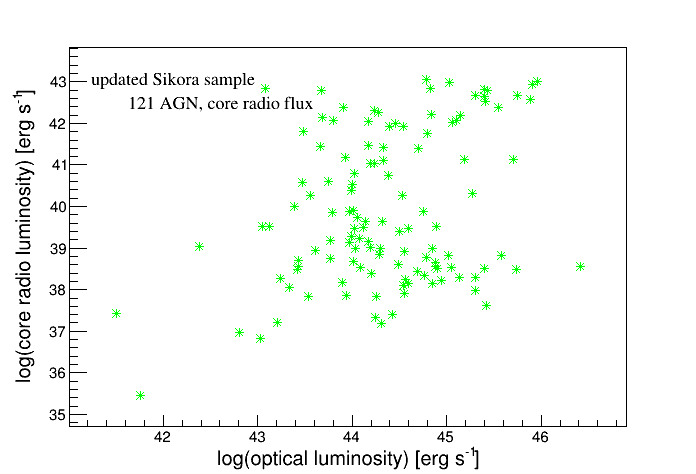
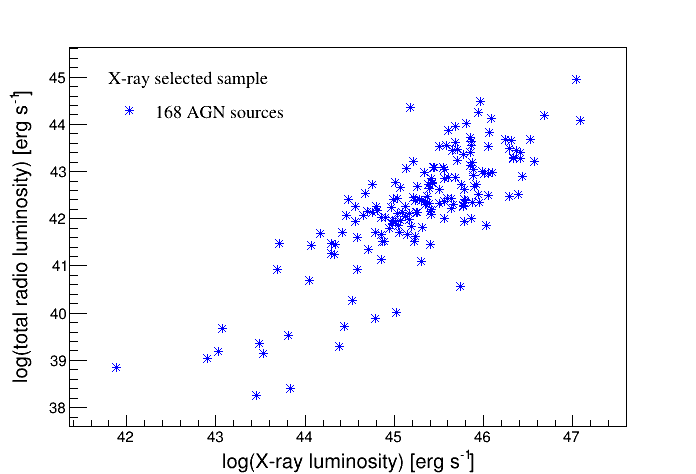
Updated Sikora sample (Sikora et al. 2007).
X-ray selected
sample. Total radio
Core radio luminosity at 5 GHz vs. B-band
luminosity at 5 GHz (from Veron catalog)
nuclear
luminosity. vs. X-ray nuclear luminosity.
References:
Blandford, R. D. & Znajek, R. L. 1977, MNRAS, 179, 433
Broderick, J. W. & Fender, R. P. 2011, MNRAS, 417, 184
Caramete, L. I. & Biermann, P. L. 2010, A&A, 521, 55
Gallo, E., Fender, R. P., & Pooley, G. G. 2003, MNRAS, 344, 60
Garofalo, D., Evans, D. A., & Sambruna, R. M. 2010, MNRAS, 406, 975
Ho, L. C. 2002, ApJ, 564, 120
Kellermann, K. I., Sramek, R., Schmidt, M., Shapper, D. B., & Green, R. 1989, AJ, 98, 1195
Sikora , M., Stawarz , L ., & Lasota , J. P. 2007, ApJ, 658, 815
Articles:
Dutan, I. & Caramete, L. I., Ultra-High-Energy Cosmic Rays from Low-Luminosity
Active Galactic Nuclei, 2015
Astroparticle Physics, Volume 62, p. 206-216

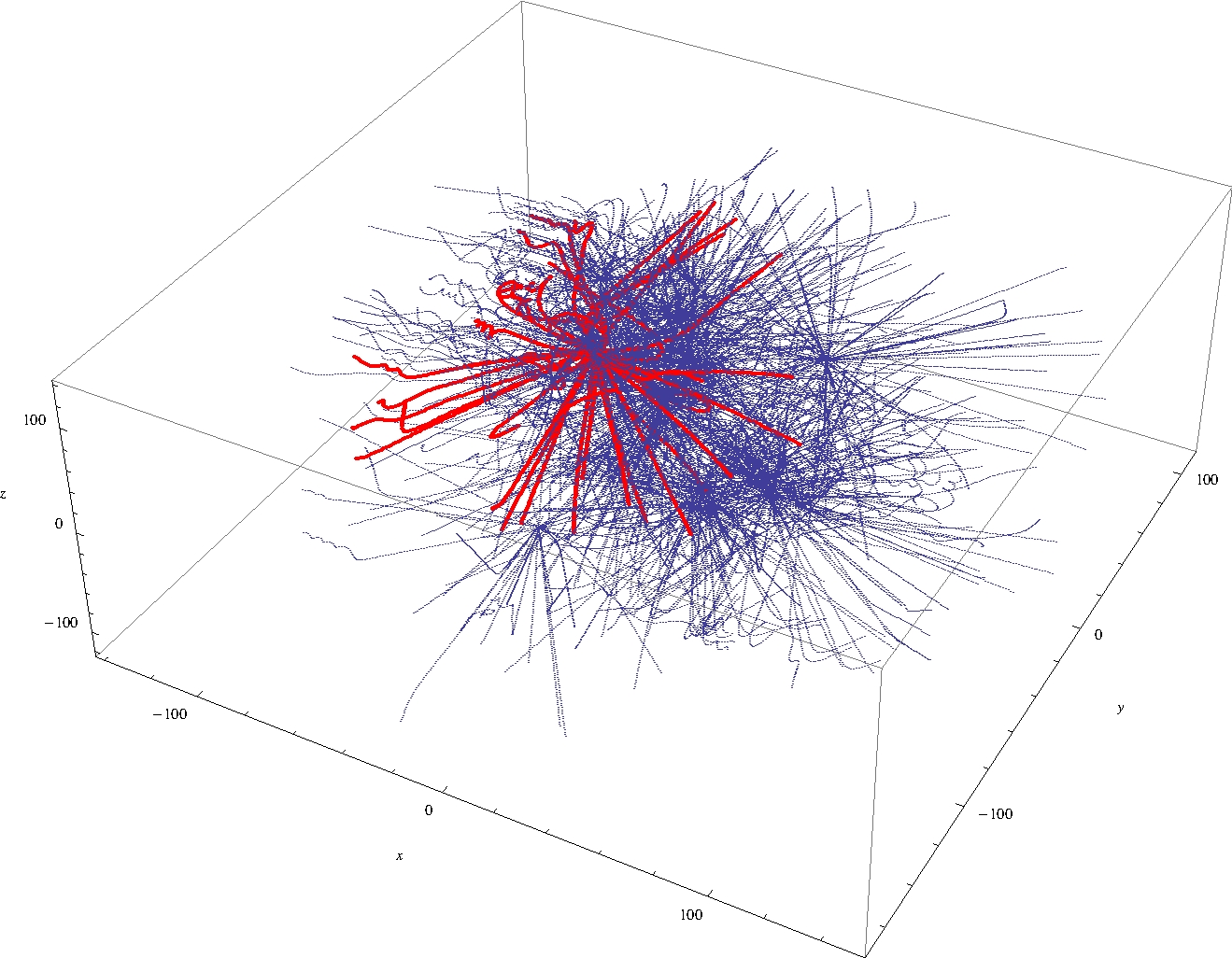
Energy spectrum: blue = observed spectrum
3D
reprezentation of the UHECR trajectories
by the Pierre Auger Observatory; red = from
1D using CRPropa simulations.
CRPropa simulations; black = from Mathematica
simulations.
Conferences, meetings, and talks:
- Seminar in Astrophysics, Faculty of Physics, University of Bucharest, Romania, 7 May 2015 [talk]
- 14th XMM-Newton SAS Workshop, European Space Astronomy Centre (of ESA), Madrid, Spain, 2-6 June 2014
- The Strong Gravity Regime of Black Holes and Neutron Stars, Bad Honnef, Germany, 31 March - 4 April 2014 [talk]
- 27th Texas Symposium on Relativistic Astrophysics, Dallas, USA, 8-13 December 2013
- From Black Holes to Cosmic Rays: when plasmas go wild, Les Houches, France, 14-18 October 2013 [talk]
- Working visit: Prof. Dr. Ken-Ichi Nishikawa, University of Alabama, Huntsville, USA, 1-16 December 2012 [talk]
Special guests at the ISS:
- Prof. Dr. Ken-Ichi Nishikawa (from the University of Alabama, Huntsville, USA), 28-31 July 2013 [talk], [video]
Public outreach:
- [RO] Noaptea cercetatorilor 2014, Bucharest, Romania, 26 September 2014
- [RO] Scoala altfel
2014, ISS, Magurele, Romania, 7-11 aprilie 2014 [pictures]
Explorare interactiva a planetelor din Sistemul Solar (Windows, Mac)
Clasificarea galaxiilor
- [RO] Noaptea
cercetatorilor 2013, Bucharest, Romania, 27 September 2013 [pictures]
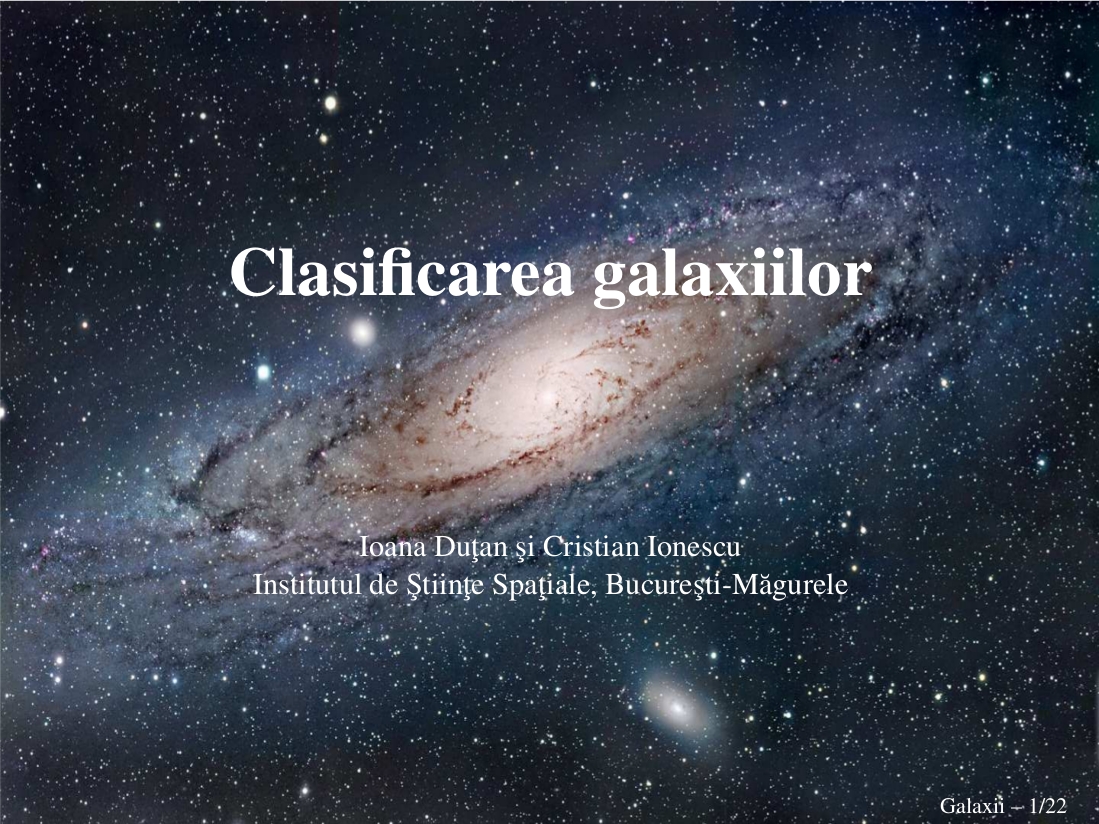
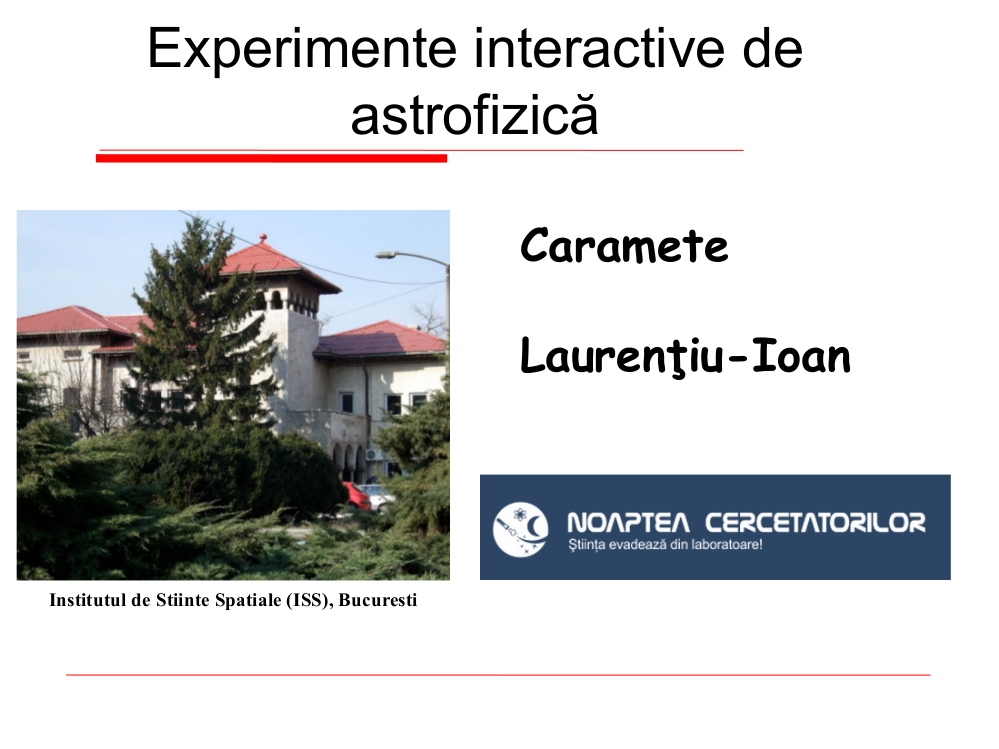
- [RO] Workshop: Fizica - Poarta spre cunoastere universala - invatarea si comunicarea stiintei pentru elevii din invatamantul preuniversitar, editia I, Bucharest, Romania, 1-7 September 2013
- [RO] Centenarul
cercetasiei in Romania, Mogosoaia, Romania, 6 August 2013 [pictures]

- [RO] Cu mic, cu mare...prin
Univers, Faculty of Physics, Magurele, Romania, 18 May 2013
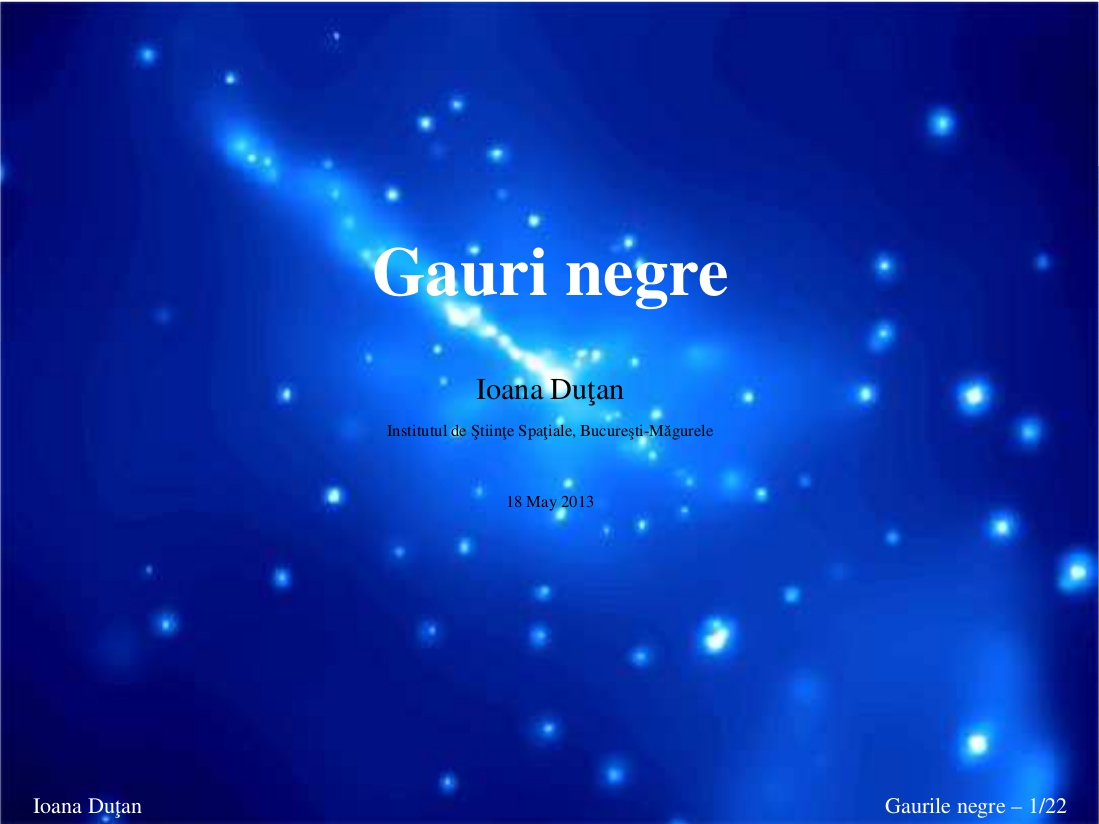
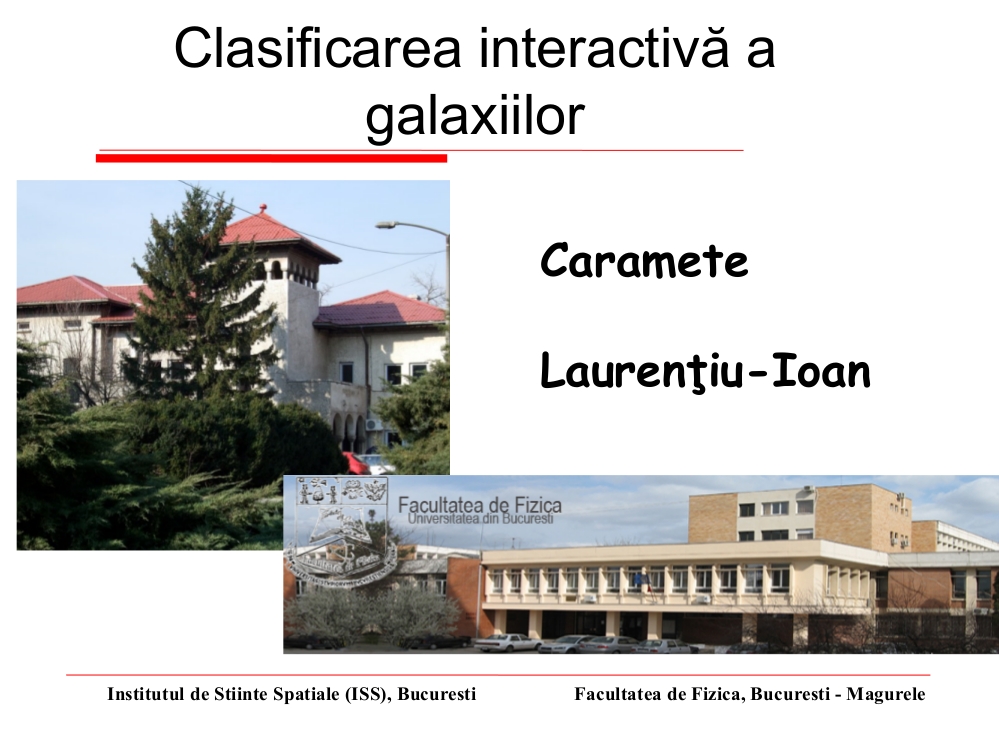
- [RO] Scoala altfel 2013, ISS, Magurele, Romania, 1-5 April 2013 [pictures]

